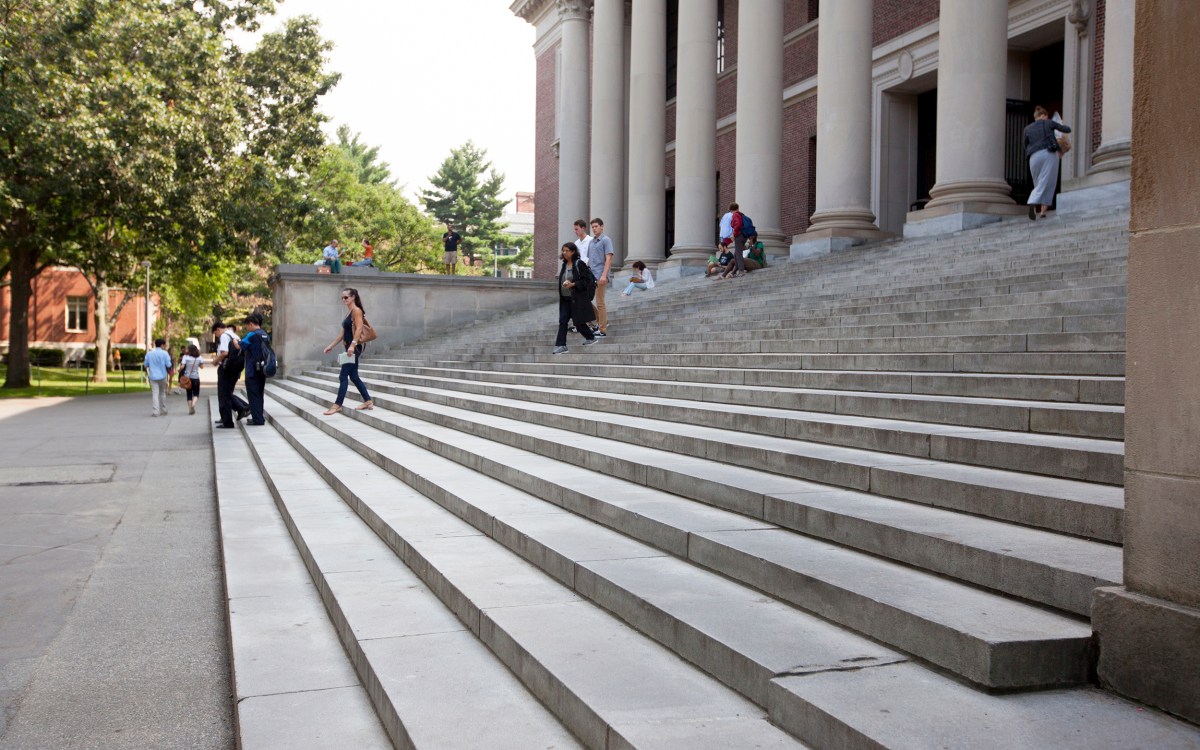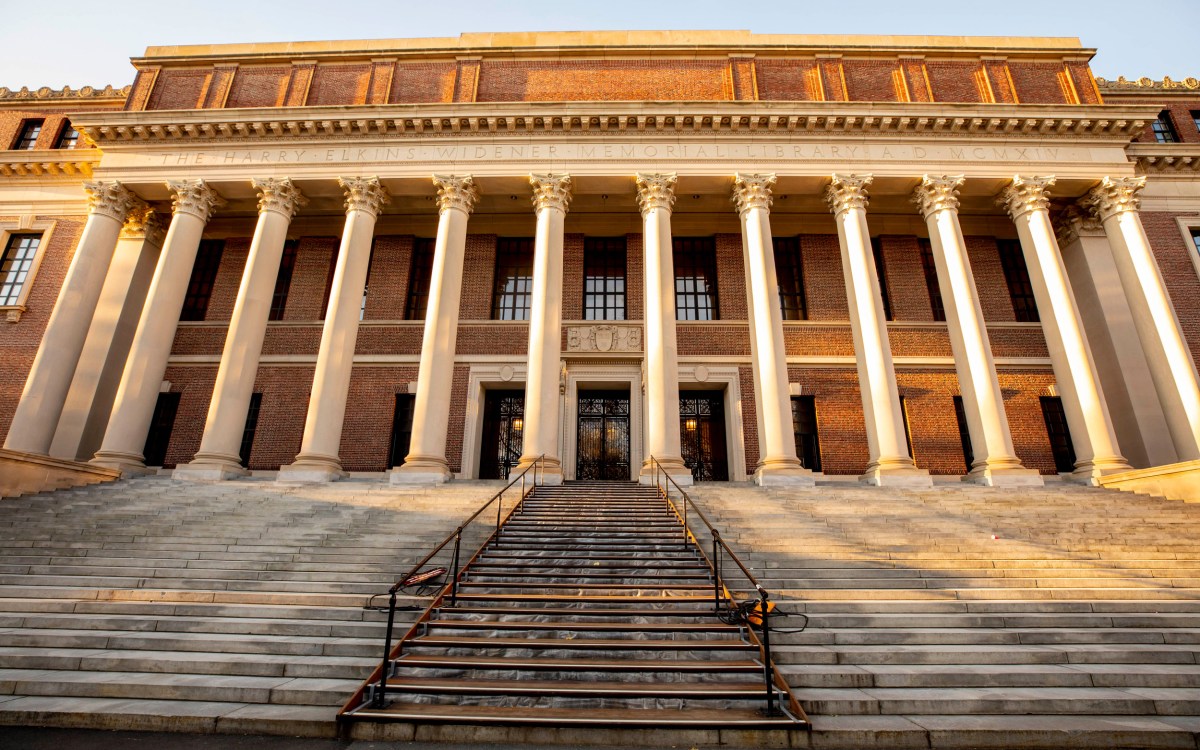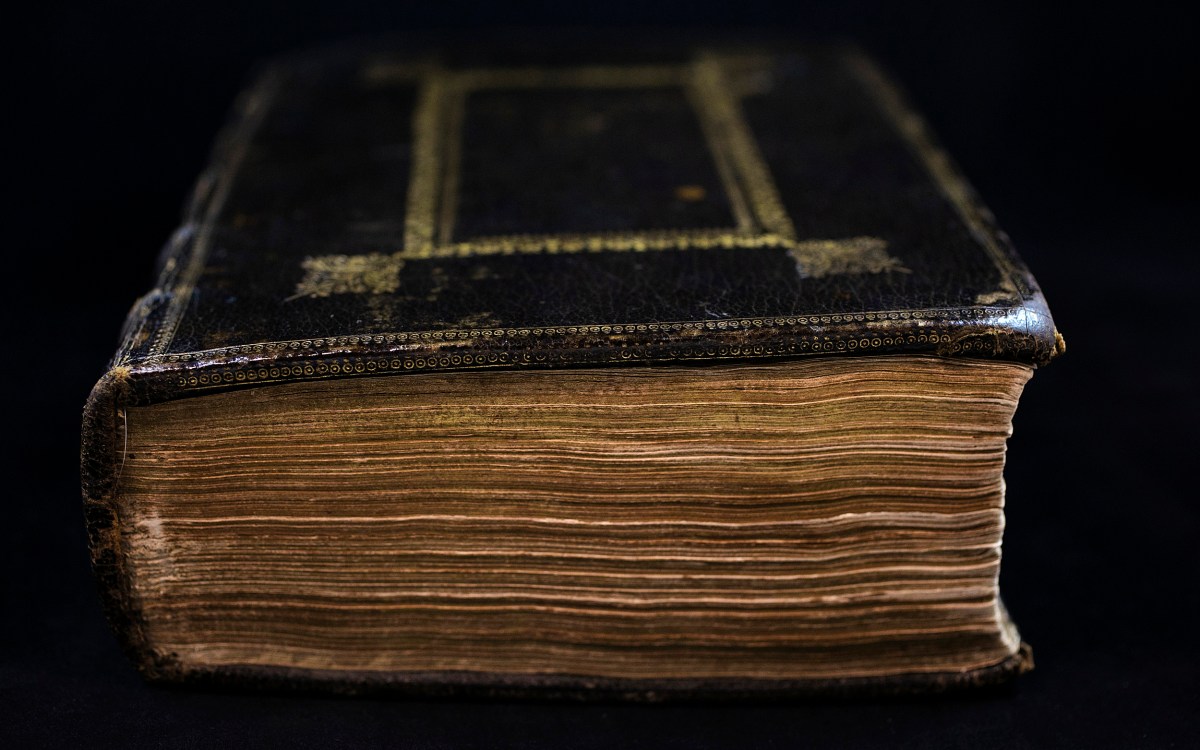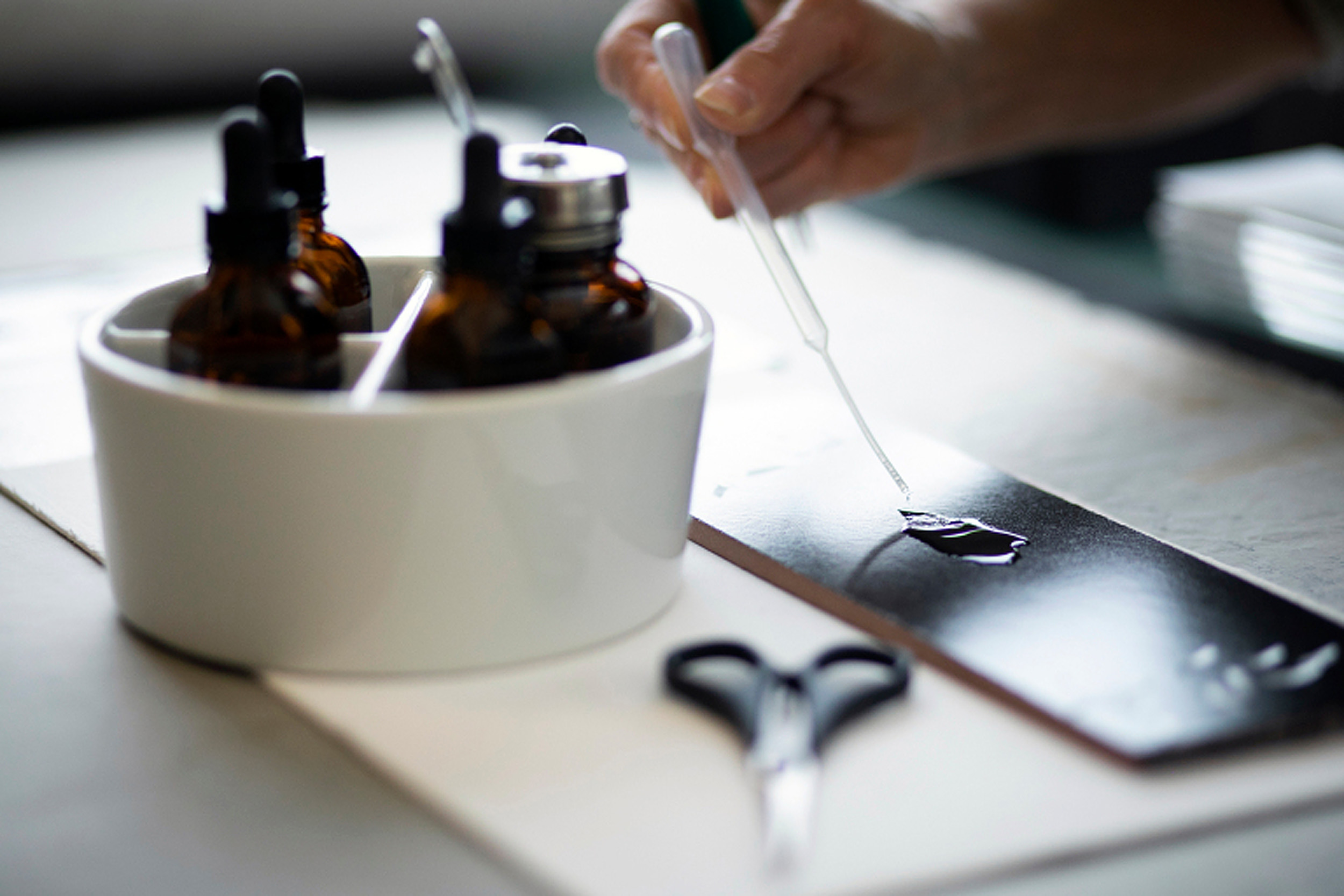
Weissman Preservation Center turned 20 years old this year.
Stephanie Mitchell/Harvard file photo
Preservation in a pandemic — and beyond
Director Brenda Bernier discusses the role of Preservation Services
Preservation Services has existed in some form at Harvard Library for over 300 years; its staff work to maintain, protect, and repair library collections, as well as develop and share best practices for preservation and conservation.
It had been a tumultuous year globally and at Harvard, as staff transitioned to remote work in March 2020 and Preservation Services saw its own emotional ups and downs. Staff went from celebrating two decades of the Weissman Preservation Center to mourning the passing of the center’s founding donor Paul Weissman ’52, who passed away at the beginning of October.
Paul Weissman and his wife, Harriet, said last spring they were honored to be associated with preservation staff’s work “to preserve countless treasures for use, both now and in the days to come.” In this forward-looking spirit, Preservation Services Director and Malloy-Rabinowitz Preservation Librarian Brenda Bernier sat down (virtually) with Harvard Library Communications to talk about preservation during a pandemic — and what comes next.
Q&A
Brenda Bernier
HL Comms: What is the role of Preservation Services at Harvard, generally? Right now, with the on-campus/remote hybrid, what is its role?
Brenda Bernier: Our role, broadly, is to ensure the longevity and usability of the University’s library and archival collections, which can include anything from papyrus fragments to emails. We do this by preparing items for research, teaching, and digitization, and by mitigating deterioration and damage. They’re the University’s intellectual and material capital, so Harvard is well-served by preserving these materials.
Our role now is much the same as always, but how we execute it is different. Right now, rather than focusing on making materials ready for exhibition, we’re focusing heavily on making them ready for remote learning — for instance, preparing the great volumes of material that have been coming through for digital course reserves.
Then there’s the book backlog that we had over the summer when staff returned to the libraries — thousands of returned books are being processed and some need preservation attention. We’ve also been asked to talk with classes about content that relies on staff expertise, we’re experimenting with how to do a remote preservation consultation, and we’re developing immersive virtual tours of our spaces.
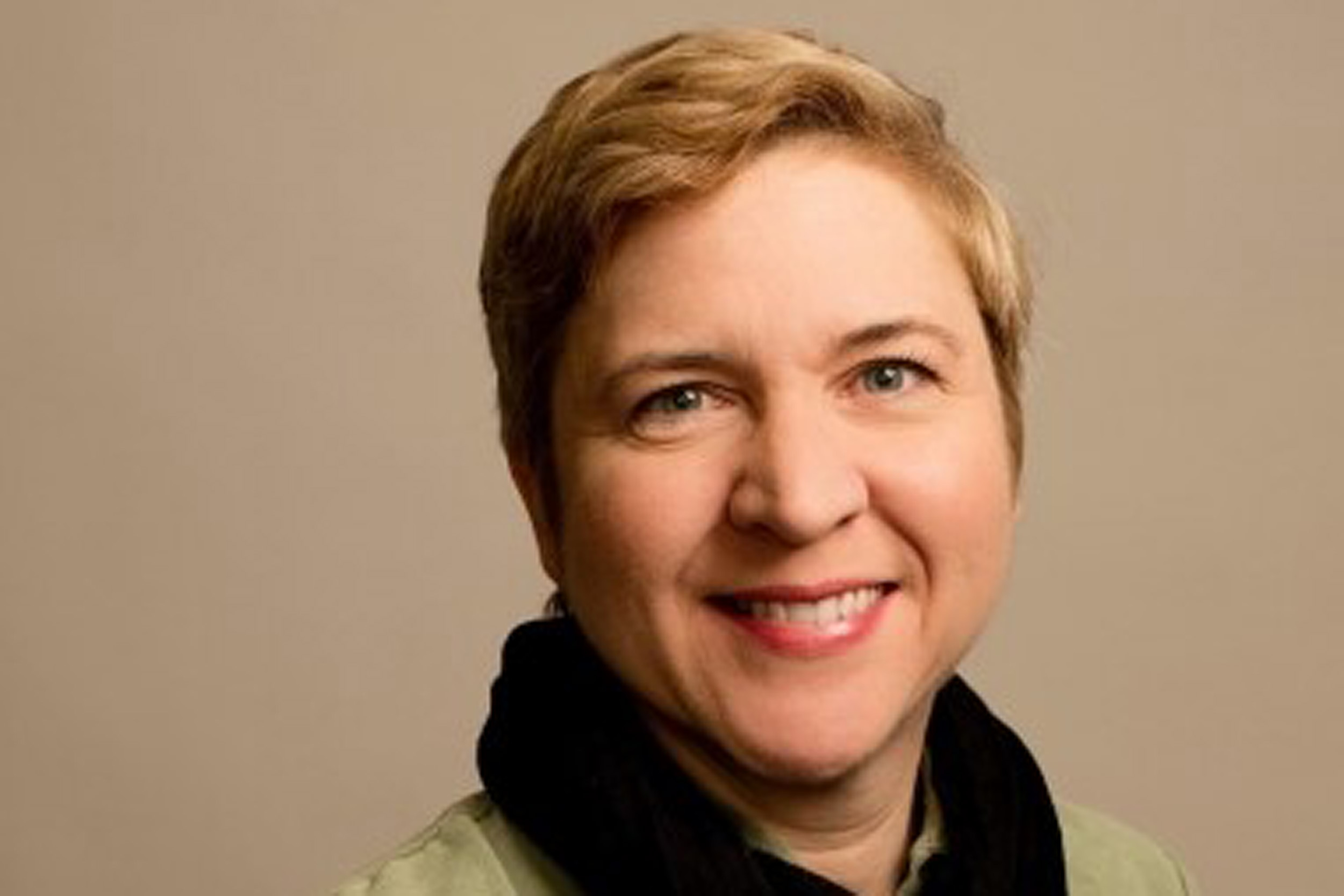
HL Comms: Looking back over the past 20 years, what are a few examples of major impacts/innovations Harvard Preservation has had on the field — both at Harvard and beyond?
Bernier: The creation of the Harvard Depository for library collections was more than 20 years ago, but it did have an enormous impact. It was an early, excellent example of an efficient space and preservation environment designed to maintain the longevity of library materials, where you’re not also having people trying to study in 50 degrees. It is known as the “Harvard Model” to other institutions around the country that used the design.
Our Library Collections Emergency Team has had a big impact, too; we’ve trained several hundred library staff members to prevent and mitigate damage to collections. We also led the development of the industry-wide preservation standards for audiovisual media. Our Digital Repository Service was one of the first and most influential of its kind, and we created a digital preservation tool that’s still the most-downloaded open-source product by the digital preservation community.
In terms of conservation, we developed methodology for stabilizing flaking paint on illuminated medieval manuscripts, for efficiently and safely mending large batches of books, and for photographing light-sensitive cultural heritage items. With our salt print initiative, we’ve developed a taxonomy that others can use and created a non-contact method to chemically analyze coating on the prints, so it can be used on very delicate materials. All these things are now called the “Harvard Method,” so there’s a Harvard Method for this and a Harvard Method for that.
HL Comms: How does preservation’s work impact the library user experience?
Bernier: The user experience is woven into every part of our services. We create guidelines for safe material handling, for instance, so researchers can go into the reading room and feel confident handling the materials. Our work on preparing materials for digitization enables users to experience materials remotely and often in new ways that were not possible with the physical original. With audiovisual materials, they’re fragile, and often need to be played on equipment that’s now obsolete. So, preservation is a critical component to accessing rare and fragile collections — without preservation there would be no user experience at all.
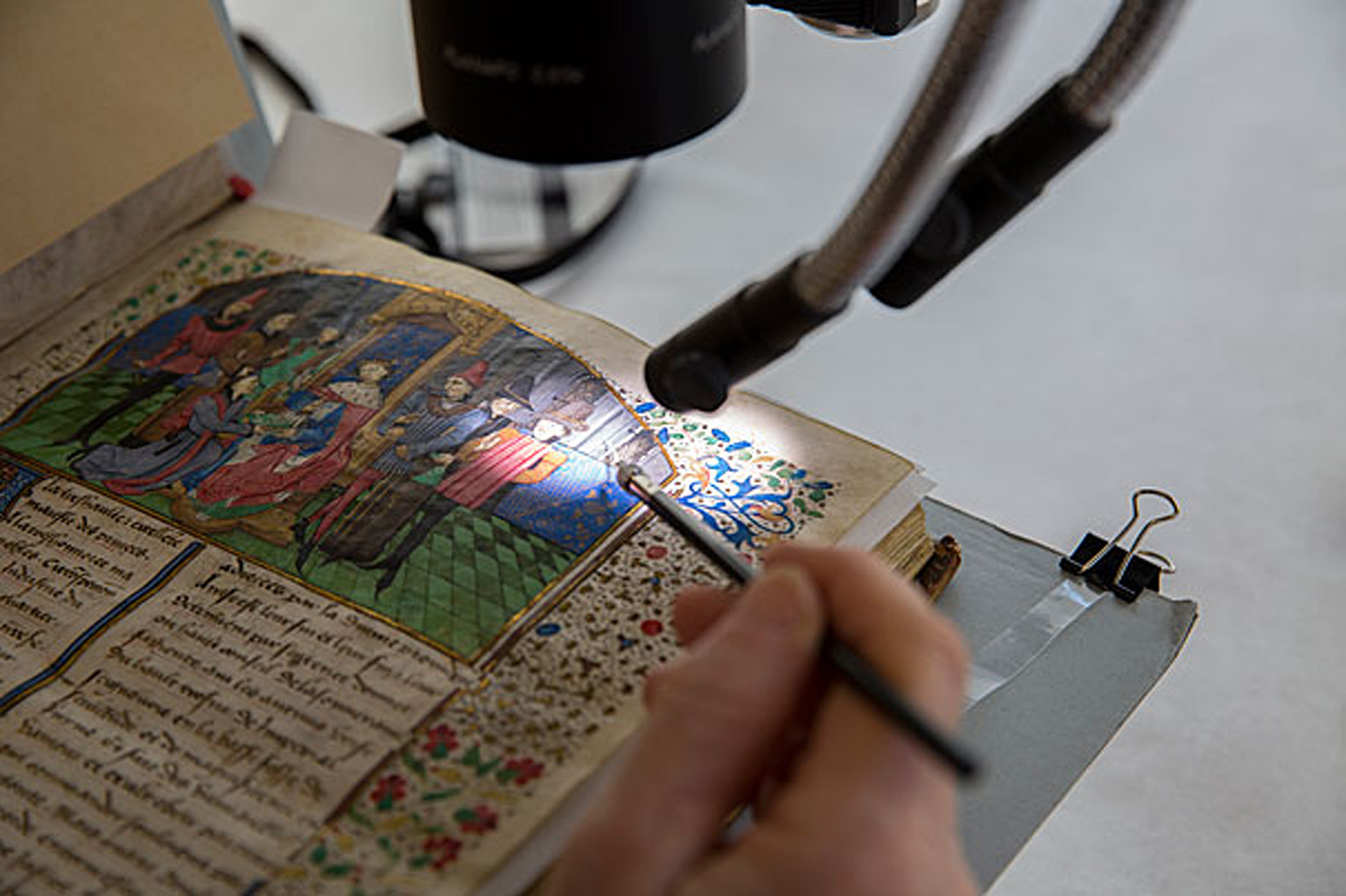
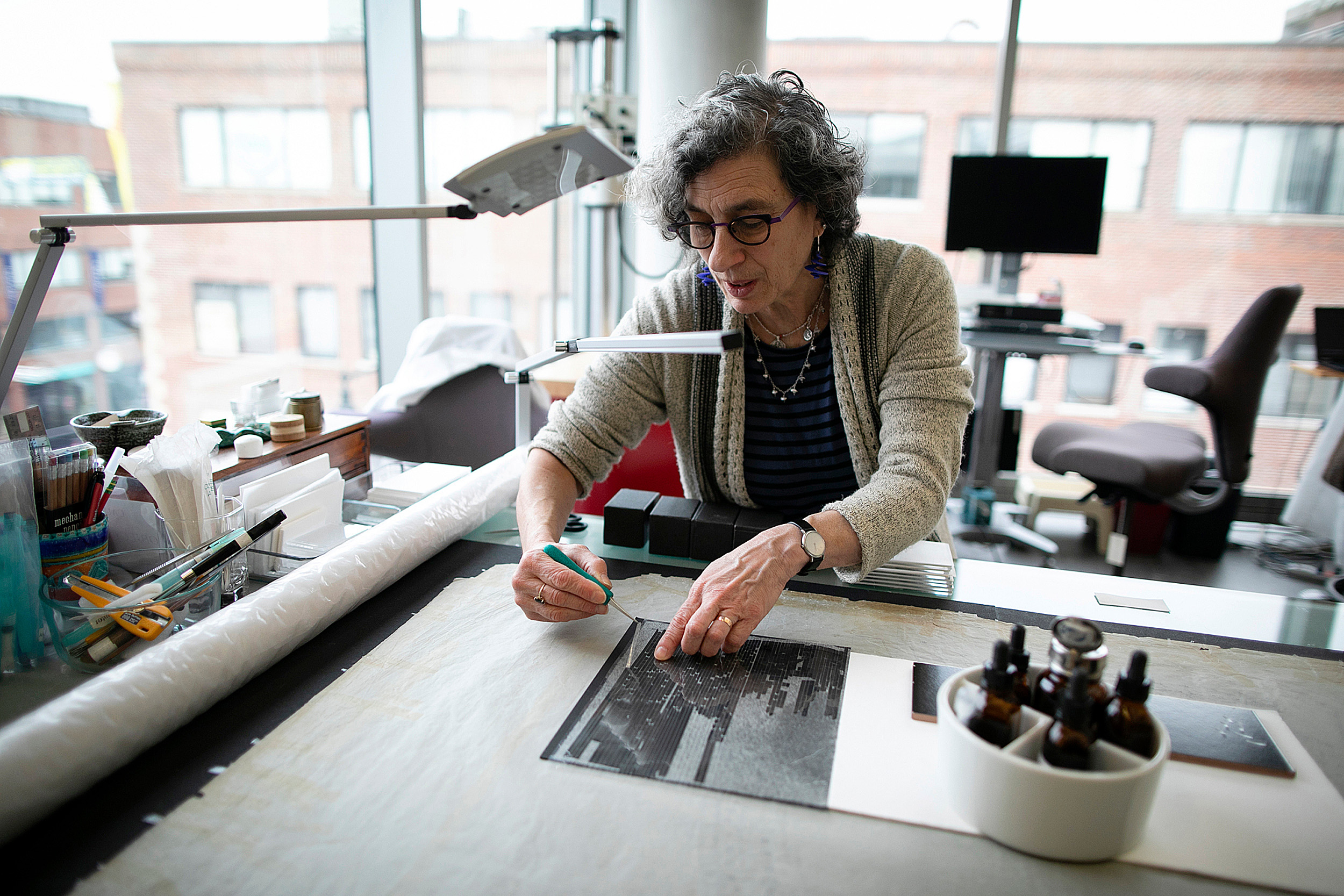
Book Conservator Catherine Badot-Costello uses a microscope to work on an illuminated, bound parchment manuscript from Houghton Library, dated 1464. Helen H. Glaser Conservator Debora Mayer is pictured working in the center.
File photos by Jon Chase and Stephanie Mitchell/Harvard Staff Photographers
HL Comms: What role does preservation play in maintaining collections care, especially now as we work to keep materials free from COVID contamination?
Bernier: We have a long history of working with Harvard’s Environmental Health and Safety (EH&S) on the safety elements of handling library collections, including contaminants. Before COVID, contaminants were usually things like mold, dust, and sometimes insecticide. EH&S are the ones who bring expertise on what’s safe for humans, while we understand what is safe for collections. So that’s what we’ve been doing in the time of COVID, too — partnering with EH&S to understand the research around virus on materials and how we can mitigate that risk when staff and patrons are handling library materials.
To prevent mold outbreaks we’re working with facilities managers to monitor the temperature and humidity of our collection storage areas, during times when vigilant staff are no longer routinely there. And our collections emergency team developed remote consultation procedures, which have been very effective for responding to minor events, like a recent leaking pipe.
HL Comms: What makes preservation and digitization critical in the 21st century?
Bernier: Access to information, especially to original documents that have known provenance, is one of the best tools we have to prevent the spread of disinformation. But right now, we can’t have that access unless we have digital surrogates. As the variety of physical and digital formats increases, it’s important to be able to emulate the original experience of using the materials as well as enable new forms of experiences and creative reuses.
HL Comms: What would you say are the biggest misconceptions about preservation work — in general, during the pandemic, or both?
Bernier: One is that we all wear white gloves while we work! White cotton gloves are actually too clumsy, though we do wear surgical gloves when handling fragile materials.
A misconception during the pandemic specifically is that there’s nothing for conservation staff to do because we’re at home, but our conservation staff have been quite busy getting materials and projects ready for our post-pandemic reality.
As far as general misconceptions, there are a few that come to mind. In the digital space, one big misconception is that digital preservation is just about digitization, while another is that it’s just about information “backup.” While these are important parts of an effective strategy, digital preservation involves a comprehensive program of policies, procedures, staff expertise, and technology. Luckily, we have all of these at Harvard!
But the biggest misconception, really, is that preservation is a reactive activity that happens towards the end of an item’s usable life. We’re involved in the whole lifecycle of an object from determining transport and storage needs when it comes to the library, to preparing it for exhibition or classroom use, to digitizing it for broader access and innovative use, to making sure that digitized version is findable, accessible, and reusable — both now and in the future.
HL Comms: How does COVID change the landscape of preservation’s work, going forward?
Bernier: The jump to online learning was happening before, but now it is in hyperdrive. Going forward, there will always be a component of that with our work — helping increase student access to digitized, born-digital, and one-of-a-kind materials that can’t be seen off campus, to inform and ignite research, teaching, and learning at Harvard.



